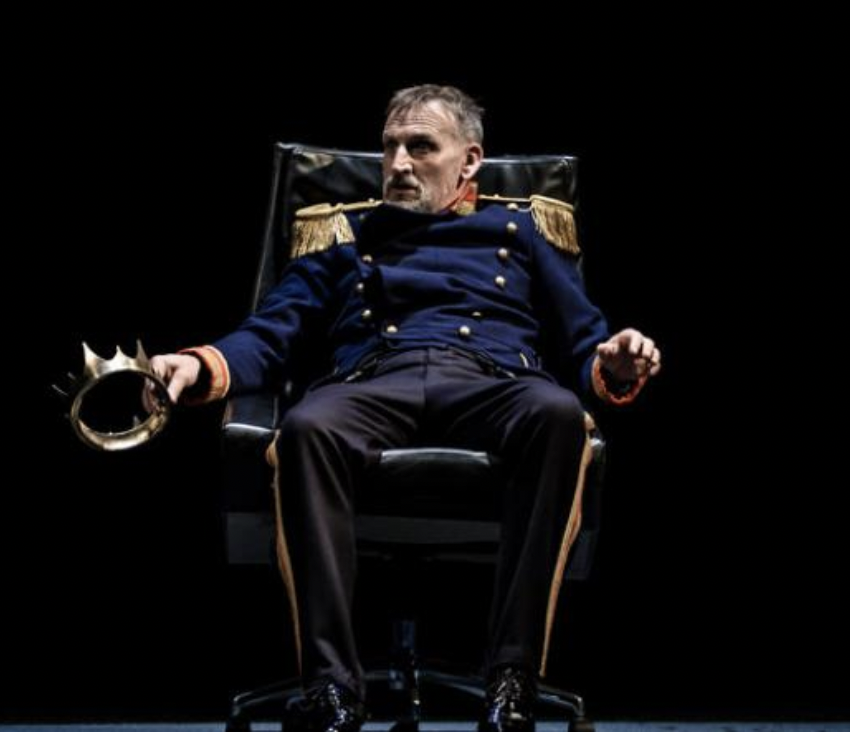NOW EXTENDED THRU MARCH 25!
By Brian Scott Lipton
Every theater critic (and fan) wishes they owned a time capsule to go view legendary moments in theatrical history, from Ethel Merman in “Annie Get Your Gun” to Laurette Taylor in “The Glass Menagerie.” Personally, I would definitely hurtle back into 1960 to see how Edward Albee’s groundbreaking two-hander “The Zoo Story” first shocked Off-Broadway audiences, aiming a finely calibrated microscope at the nature of male behavior, class differences, and modern alienation.
Nearly 60 years later, the impact of Albee’s one-act (his first play, reportedly written in just three weeks) may be slightly lessened. But as proved by its current, splendid incarnation at the Signature Theater – where it is paired with Albee’s striking prequel “Homelife” under the umbrella “At Home at the Zoo” – the work can still rouse us from our metaphorical slumbers and force us to reexamine how we interact with each other (and ourselves) on a daily basis.
Much of the credit for this production’s success belongs to the sensitive direction of Lila Neugebauer, who obviously trusts both Albee’s words and her cast. The latter is led by the great Paul Sparks, who finds just the right tone for portraying Jerry, the central character in “The Zoo Story.” A desperately lonely, possibly mentally unbalanced man, Jerry suddenly strikes up a conversation with the naturally reticent Peter (the excellent Robert Sean Leonard), a married upper middle-class publishing executive who uses the park as a refuge from socializing with anyone.
In any production of “The Zoo Story,” one often wonders why Peter doesn’t just get up and leave. But Sparks manages to be flamboyantly entertaining and poignantly sad without ever seeming too menacing. (Kate Voyce smartly outfits him in a clean t-shirt and jeans.) As a result, you understand, on even a basic level, why Peter feels the need to listen to this complete stranger spin his strange yarns, most notably his multiple encounters with his landlady’s violent dog.
Moreover, while Peter barely talks for most of this hour, Leonard communicates how Jerry may even feel some deep-seeded kindred connection to Peter, despite their obvious class differences. That they ultimately are two very different men –and also very similar – is what provides the story with its wallop of an ending, one which you will think about for days afterward.
While “The Zoo Story” essentially stood on its own for much of its life (although sometimes paired with either Albee’s “The American Dream” or Samuel Beckett’s “Krapp’s Last Tape”), the prize-winning playwright decided back in 2003 that Peter needed some backstory to flesh out his actions in the play. Hence, came the birth of “Homelife,” a slighter if quintessentially Albeesque meditation on marriage.
Here, ensconced in his comfortable Upper East Side apartment, Jerry must react to the musings of another “stranger” – his wife Ann (Katie Finneran), who has seemingly spent their marriage hiding her deepest feelings from her spouse. As in much of Albee’s work, the conversation is often banal (can you parboil spinach?), pedantic (do you cut off your breasts or hack them off?), even circuitous – all until someone gets the courage to tear the BandAid off the skin and expose the gaping wound underneath.
In Ann’s case, it’s twofold: her doubts about her own self-worth and her gnawing feeling that something in Peter’s nature has led to a certain dissatisfaction in their marriage. Watching Finneran not just build up to her revelations, but eventually announce them, is thrilling: she is alternately funny and heartbreaking, confident and unsure, matter-of-fact and deadly serious. It’s a masterful performance that, like Sparks’, can only happen because Leonard is so willing to cede the spotlight but still find a quiet way of shining.
Photos: Joan Marcus
Edward Albee’s “At Home at the Zoo” continues at the Pershing Square Signature Theatre (420 West 42nd Street) through March 21. Call 212-244-7529 or visit www.SignatureTheatre.org for tickets.
























